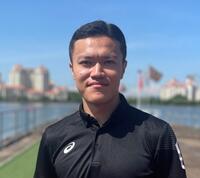Research Experience
-
2024.04-Now
Waseda University Faculty of Sport Sciences
-
2022.04-2024.03
Waseda University Institute for Sport Sciences
-
2022.04-2024.03
The University of Tokyo Graduate School of Arts and Sciences
-
2023.02-2024.02
Nationl Youth Spots Institute (Singapore) Visiting Scholar
-
2021.04-2022.03
Waseda University Faculty of Sport Sciences
-
2018.04-2021.03
Waseda University Faculty of Sport Sciences


Click to view the Scopus page. The data was downloaded from Scopus API in January 07, 2026, via http://api.elsevier.com and http://www.scopus.com .